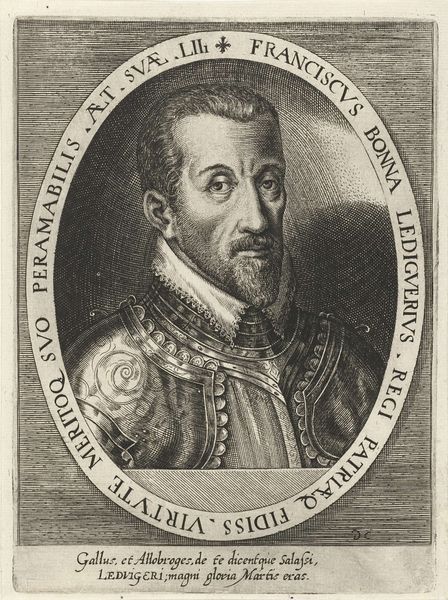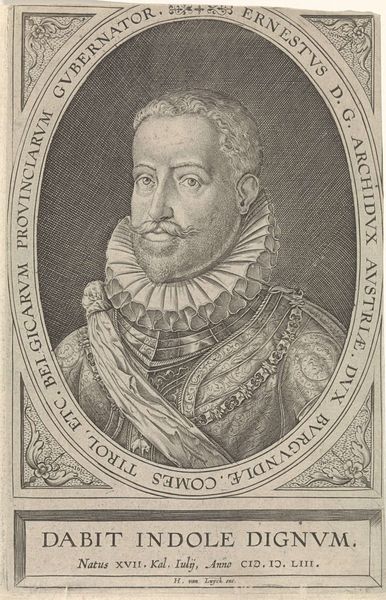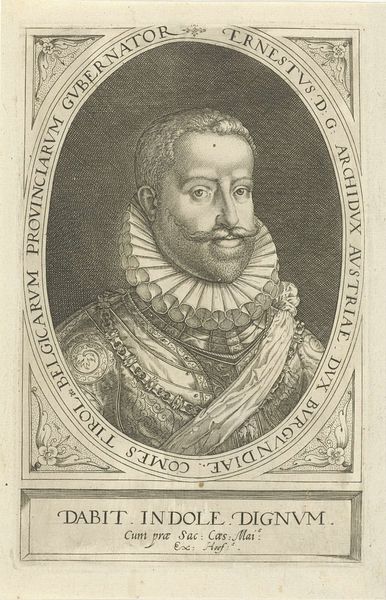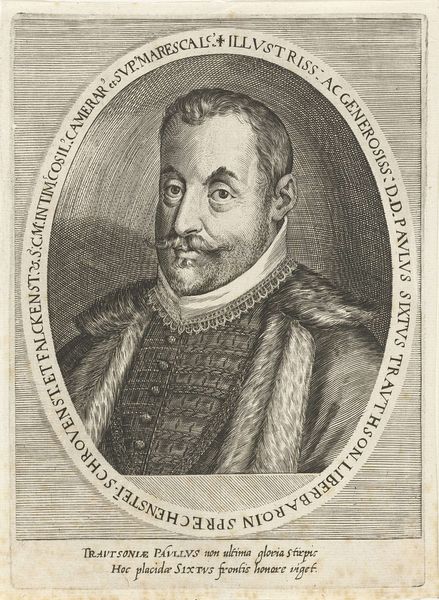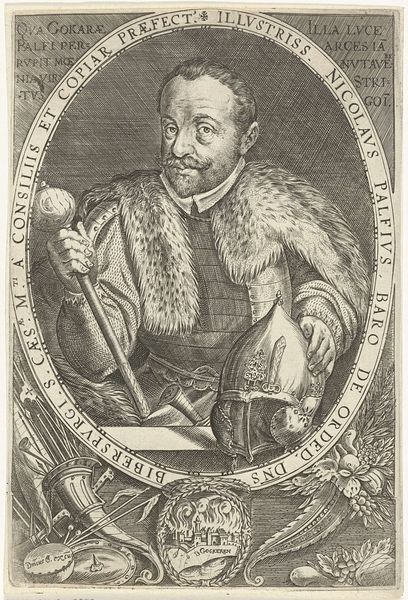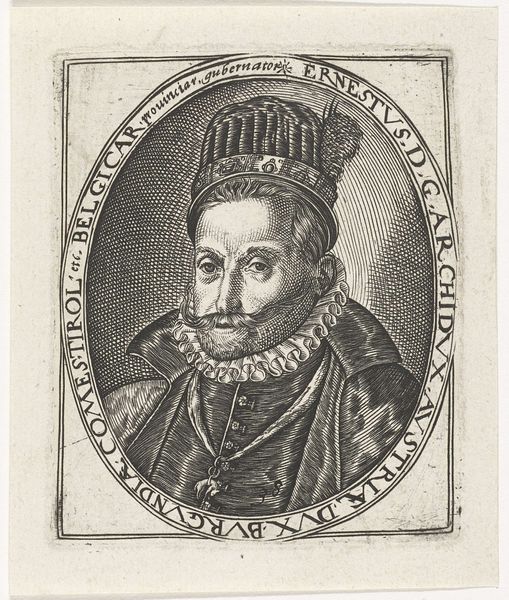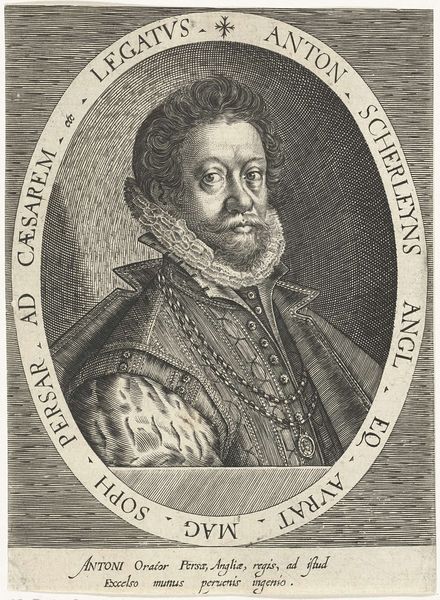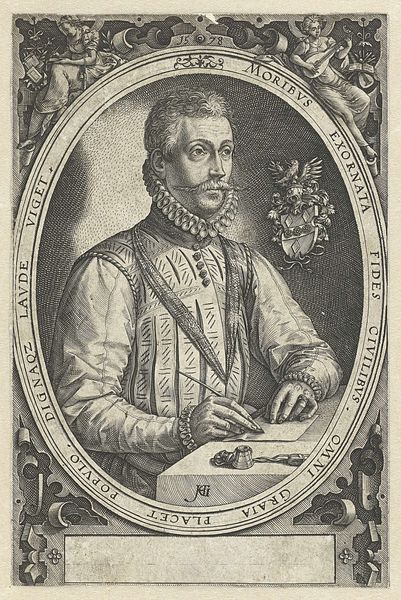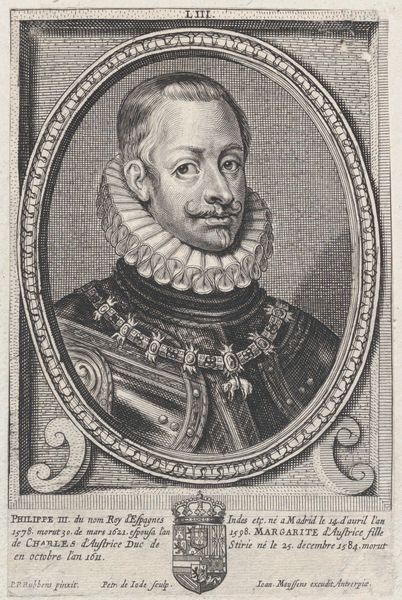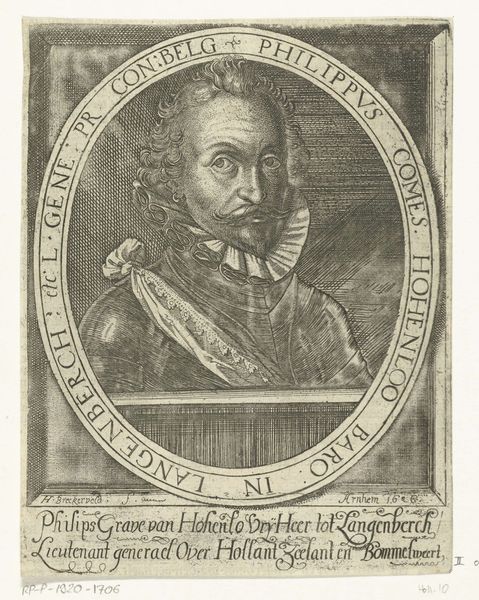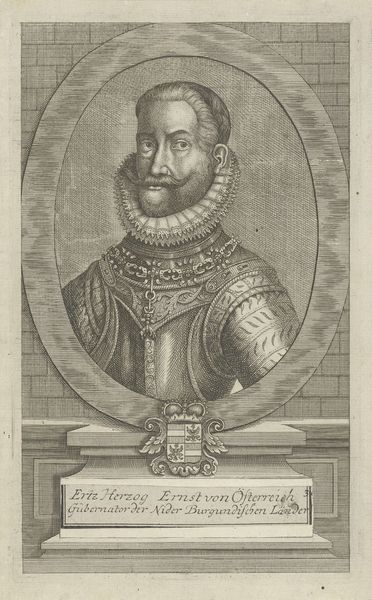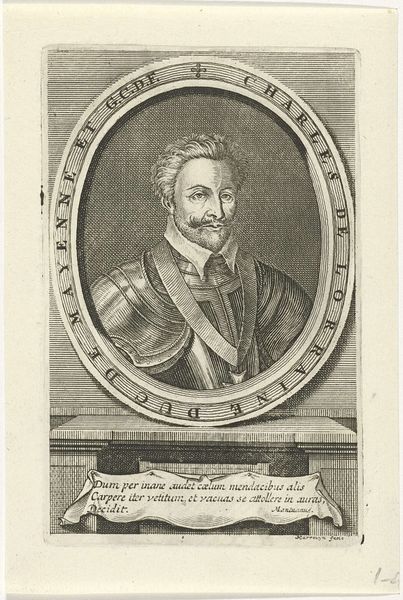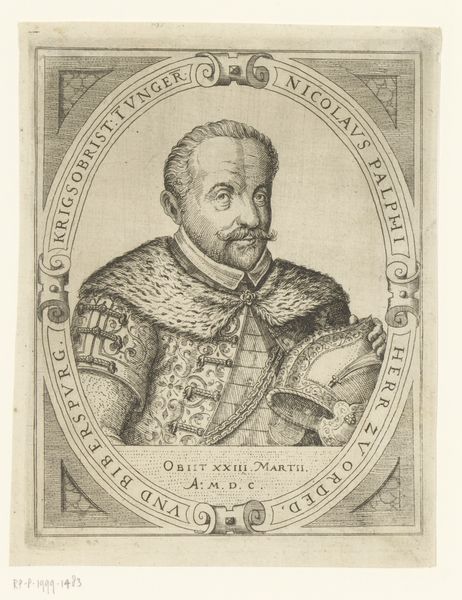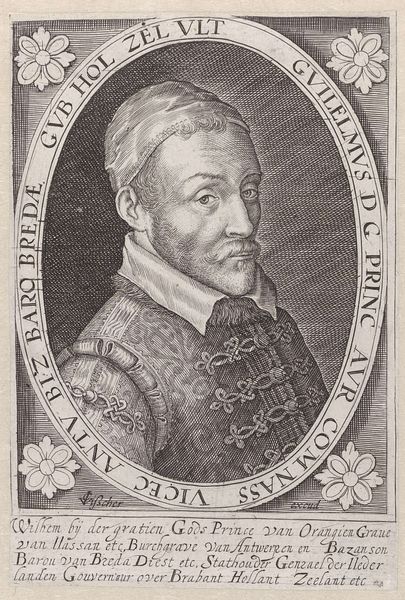
print, engraving
#
portrait
# print
#
11_renaissance
#
portrait drawing
#
engraving
Dimensions: height 168 mm, width 115 mm
Copyright: Rijks Museum: Open Domain
Editor: Here we have "Portret van François de Bourbon, prins van Conti," created sometime between 1600 and 1604 by Dominicus Custos. It's an engraving, a print of a portrait, and something about the level of detail in the armor stands out to me. What are your initial thoughts on this piece? Curator: Well, considering this print reproduces a portrait of François de Bourbon, it's vital to look at it as a commodity. The means of production are key here. Engravings like these allowed for a mass dissemination of the Bourbon image. How do you think the artist’s labor impacted its meaning and reception? Editor: So it's less about the artistic merit and more about its function as a reproducible object, right? Did the accessibility diminish its value as art? Curator: Exactly. Its value shifted. The original portrait likely served an elite function, whereas this engraving opened up Bourbon's image to a broader, perhaps even international audience. Consider the materiality: the paper, the ink, the press. These choices allowed a greater consumption, expanding Bourbon's reach beyond the French court. Where and how might such prints have circulated? Editor: Possibly in pamphlets or books? It makes you wonder about the working conditions of Custos. It feels like the purpose of such reproducibility isn't artistic but promotional. Curator: Precisely. By exploring the techniques and processes, we uncover the political and economic implications. Dominicus Custos likely belonged to a printmaking workshop. What effect might collaboration or factory production have on a Renaissance artwork? Editor: It certainly challenges the idea of the singular artistic genius. It seems a product of teamwork and business as much as inspiration. That’s fascinating, I never thought to see art history through the lens of materials and production. Curator: Indeed! By focusing on these aspects, we shift from aesthetic judgment to a critical examination of power and production.
Comments
No comments
Be the first to comment and join the conversation on the ultimate creative platform.
